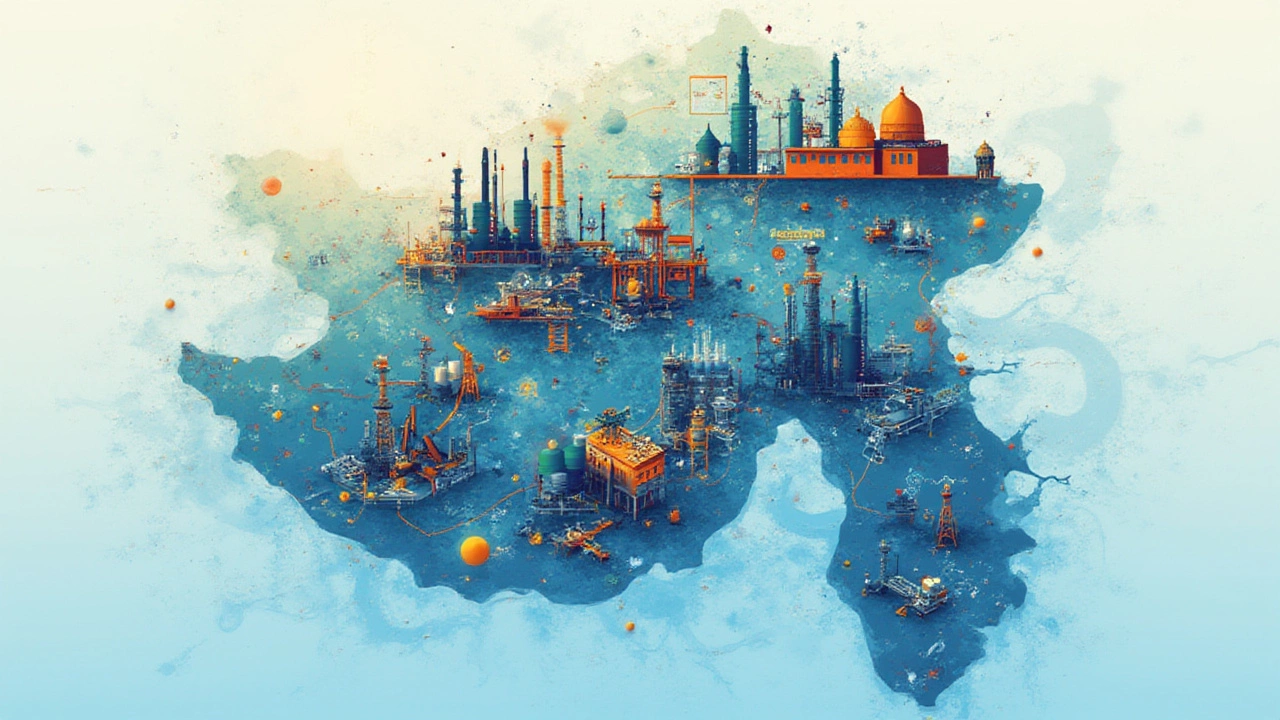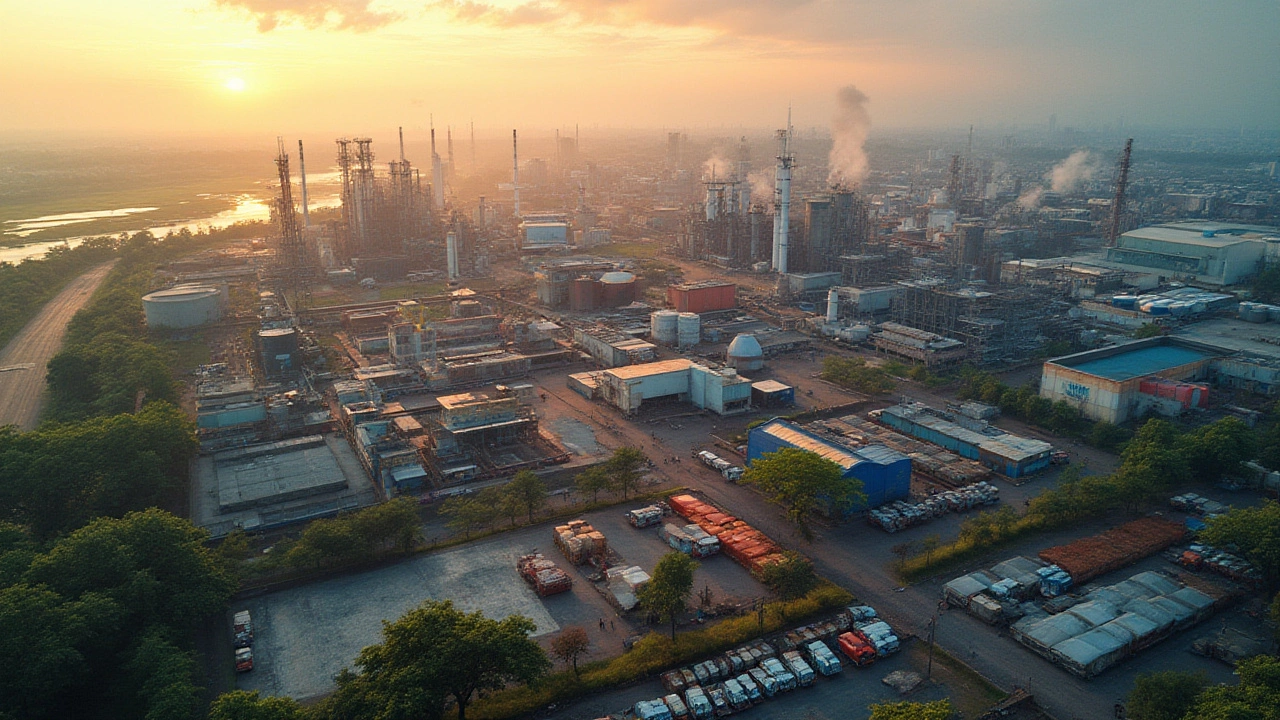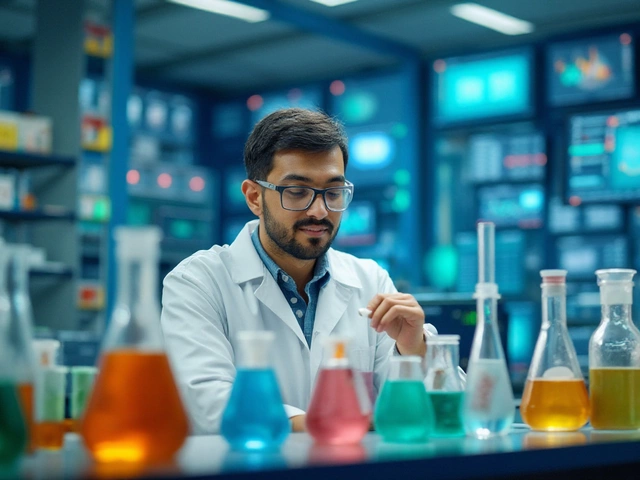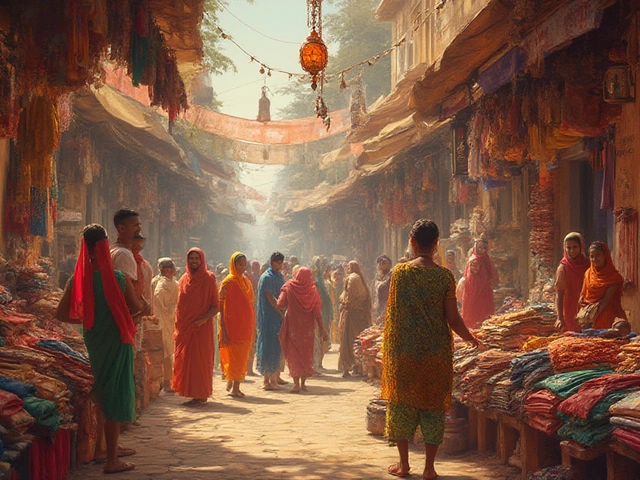Think India’s chemical industry is all about pharmaceuticals and some colourful powders? Guess again. There’s a whole ecosystem grinding out everything from dyes to detergents, agrochemicals to plastics, and the scale is massive. Blink and you might miss the real star of the show: Gujarat. This state isn’t just the largest chemical producer in India — it’s a juggernaut that’s shaped the entire sector’s evolution. How did a state known for its deserts and ports end up as the chemical capital? The answer’s fascinating, tangled with history, enterprise, and a relentless drive for growth.
How Gujarat Rose to the Top of India’s Chemical Game
Back in the late eighties, if you mentioned chemicals in India, a few cities might have popped up: Mumbai for dyes and pharma, Tamil Nadu for fertilizers, West Bengal for old-school refineries. Fast forward to now, and Gujarat sits unchallenged at the throne. The numbers are wild: Gujarat contributes more than 62% of India’s chemical production. That’s not a typo. The state churns out everything—from basic chemicals like caustic soda, soda ash, and chlorine, to complex synthetic dyes, intermediates, and speciality chemicals.
What set Gujarat apart? First, geography. Its 1,600-kilometre coastline gives direct access to raw material imports and ports like Kandla, Hazira, Dahej, and Mundra serve as lifelines for global trade. Second, Gujarat didn’t just bank on being close to the sea. The state built out an impressive infrastructure: industrial estates like Vapi, Ankleshwar, Dahej, and Panoli grew into dedicated chemical clusters. These zones aren’t just lines on a map—they’re bustling, interconnected hives where hundreds of manufacturers, small and big, operate side by side. The Gujarat Industrial Development Corporation (GIDC), established in 1962, played a major role. They set up over 200 industrial estates, most of which became hotbeds for chemical makers.
The state government took a bold approach, offering incentives, relaxed regulations, and single-window clearances. There’s a strong focus on training and innovation too. Institutions like the Institute of Chemical Technology (ICT) have roots in Mumbai but significant operations in Gujarat, feeding a steady stream of talent to local industries. Even cultural factors matter: Gujaratis have a reputation for being business-savvy, ready to experiment and scale up. It’s not just about legacy companies either. Small, family-run businesses have exploded since the 2000s, using easy access to capital and government programs like the Gujarat Industrial Policy 2020, which offers lower electricity tariffs, input tax exemptions, and easier land acquisition.
Take the Vapi industrial estate. Once famous for its black rivers (the result of uncontrolled dye effluent), it’s now made headlines for remediation and modern waste management. This transformation underscores Gujarat’s adaptability. According to the Department of Chemicals and Petrochemicals, India’s total chemical exports reached $28.7 billion in 2022–23, and Gujarat made up nearly two-thirds of it—including hefty exports to Europe, the US, and the Middle East. Small wonder the state’s chemical sector brings in more than Rs 50,000 crore in annual revenue. If you’re ever curious where that bottle of disinfectant or splash of textile dye was born, odds are, it came from here.
Breakdown of Chemical Production: What and Where
Let’s get into the details—because Gujarat doesn’t just outpace the rest of India in volume; it’s way ahead across multiple categories. This table below gives a sense of the scale and diversity of what’s produced in the state compared to the rest:
| Product | Gujarat's Share of Indian Production (%) | Main Production Hubs |
|---|---|---|
| Bulk Chemicals (Soda Ash, Caustic Soda) | 85% | Ankleshwar, Dahej, Vadodara |
| Pesticides & Agrochemicals | 60% | Bharuch, Ankleshwar |
| Dyes & Dye Intermediates | 80% | Vapi, Ankleshwar |
| Petrochemicals & Polymers | 65% | Dahej, Jamnagar, Hazira |
| Speciality Chemicals | 55% | Vapi, Panoli, Nandesari |
| Fertilizers | 35% | Vadodara, Bharuch, Kandla |
What’s striking here isn’t just the dominance—it’s the clustering. Ankleshwar, Vapi, Dahej…these are almost brand names in chemical circles. Each township specializes: Dahej in petrochemicals, Vapi in dyes and textile chemicals, Ankleshwar in pharmaceuticals and specialty molecules. Investors and multinationals are well aware of this. Companies like Reliance, Adani, Gujarat Alkalies and Chemicals Limited (GACL), and Atul Ltd. have set up enormous plants. Jamnagar, for example, is home to the world’s largest oil refinery complex, which also feeds a petrochemical mega-hub churning out plastics and derivatives exported worldwide.
Jobs flow in, both skilled and unskilled. There’s a whole workforce around these zones that’s been upskilled by technical colleges and on-the-job training. The environment has also, honestly, faced challenges—any honest discussion about Gujarat’s chemical prowess has to mention pollution woes. The story of Vapi’s polluted river followed by its slow recovery shows both the pitfalls and the determination for better regulation. The Gujarat Pollution Control Board now has tighter oversight, and many plants have installed advanced effluent treatment systems. India’s Bureau of Indian Standards revised chemical industry norms in 2023, and Gujarat’s manufacturers had been among the first to get certified.
What about other states? Maharashtra, Tamil Nadu, and West Bengal still matter. Maharashtra, for example, is big in pharmaceuticals and paints, and has hubs in Thane and Pune. Tamil Nadu makes a name in fertilizers and engineering plastics. But Gujarat clearly eclipses them for scale, diversity, and output. The state pulls ahead year after year, even as new players enter the market.

Driving Forces: Why Gujarat Continues to Dominate
It’s not just old advantages keeping Gujarat ahead. The state constantly reinvents its approach. For starters, Gujarat’s energy supply is among the most reliable in India. Chemicals demand uninterrupted electricity and water—losses from power cuts could mean ruined batches or dangerous incidents. Gujarat sidestepped these hiccups with investments in the grid, new dams, and desalination plants. Then there’s logistics: the western coast is a direct exit to world markets, shaving days off shipping times compared to Chennai or Kolkata. There’s also a scorching hot logistics corridor connecting ports to hinterland; Surat, Vadodara, and Ahmedabad are all interlinked with top-tier highways and rail lines.
The policy scene is canny. Government stances feel almost tailor-made for chemical firms. Since the late 90s, there’s been a push for public-private partnerships: infrastructure is often built by the state, but run by private consortia. Cluster-based development means smaller companies get world-class facilities—think central waste management, fire response, and high-tech security—without footing the entire bill. Startups in specialty and green chemicals are popping up steadily, sometimes outpacing the bigger players in patented processes. The Gujarat government’s ‘Single Window Clearance System’ cut red tape dramatically, making new factory setup a fraction of the hassle compared to other states.
Throw in a growing technical talent pool—graduates from institutes like IIT-Gandhinagar and Nirma University flock to Bharuch and Ankleshwar for jobs. Export incentives encourage companies to think global, and trade fairs in Ahmedabad and Vadodara attract buyers from 40+ countries annually. The result is an economy woven tightly around chemicals, right from classroom to shop floor to shipping container.
You can feel the energy in the words of Purnendu Chatterjee, managing partner at one of India’s biggest chemical investment funds:
“Gujarat’s ecosystem gives you everything—raw materials, infrastructure, talent, and, crucially, a regulatory climate that encourages rather than hinders. It’s hard to replicate this anywhere else in Asia, let alone India.”The long view? Gujarat isn’t coasting. The India Brand Equity Foundation (IBEF) pegged the state’s chemical industry growth at 9.5% year-on-year, even in turbulent times. This adaptability cements its reputation, drawing more global investment each year.
Future Trends and Tips for Breaking Into Gujarat’s Chemical Industry
Looking ahead, Gujarat doesn’t plan to slow down. Investments in ‘green’ chemistry are ramping up—bio-based chemicals, less-toxic synthetic methods, plastics recycling. Companies like Deepak Nitrite have shifted focus toward speciality chemicals, as global demand for dyes, aroma compounds, pharmaceutical intermediates, and performance materials just keeps rising. There’s real momentum in research partnerships: IITs and local universities run incubators; even established giants bankroll R&D centres for process innovation. In 2025, the Gujarat government announced the Chemical Cluster 2025 policy, carving out new tax breaks for recycling, green hydrogen, and indigenous technology projects.
Here’s the key for anyone wanting to step into this sector: know your niche. Don't chase commoditised products without massive scale or capital—multinationals already dominate those lanes. Instead, focus on speciality segments, green chemistry, or services like onsite safety management and waste recycling. Getting certified (ISO, BIS, REACH) opens up export channels; banks and VCs are easier to win over with a credible plan. Keep close tabs on government incentives—they change every few years, and the latest ones could net you reductions of up to 15% in setup costs.
If your background’s not chemical engineering, partner up. There are thousands of small firms eager for collaborations in logistics, automation, and export marketing. The state hosts trade shows and workshops year-round—perfect for networking and idea validation. Want to build a team? Tap into Gujarat’s technical colleges; many provide placement help for startups. And on the practical side, remember that while the cluster approach means shared infrastructure, mistakes in compliance or waste management are punished harshly now. Tighten up your processes sooner rather than later.
Gujarat’s story as the largest chemical producer in India isn’t just about scale or history. It’s the mix of smart planning, cultural hustle, and raw ambition. Wherever the industry heads next, expect Gujarat—and anyone in its circle—to chart the future of chemicals in India, and maybe, if trends continue, across the globe.






Write a comment